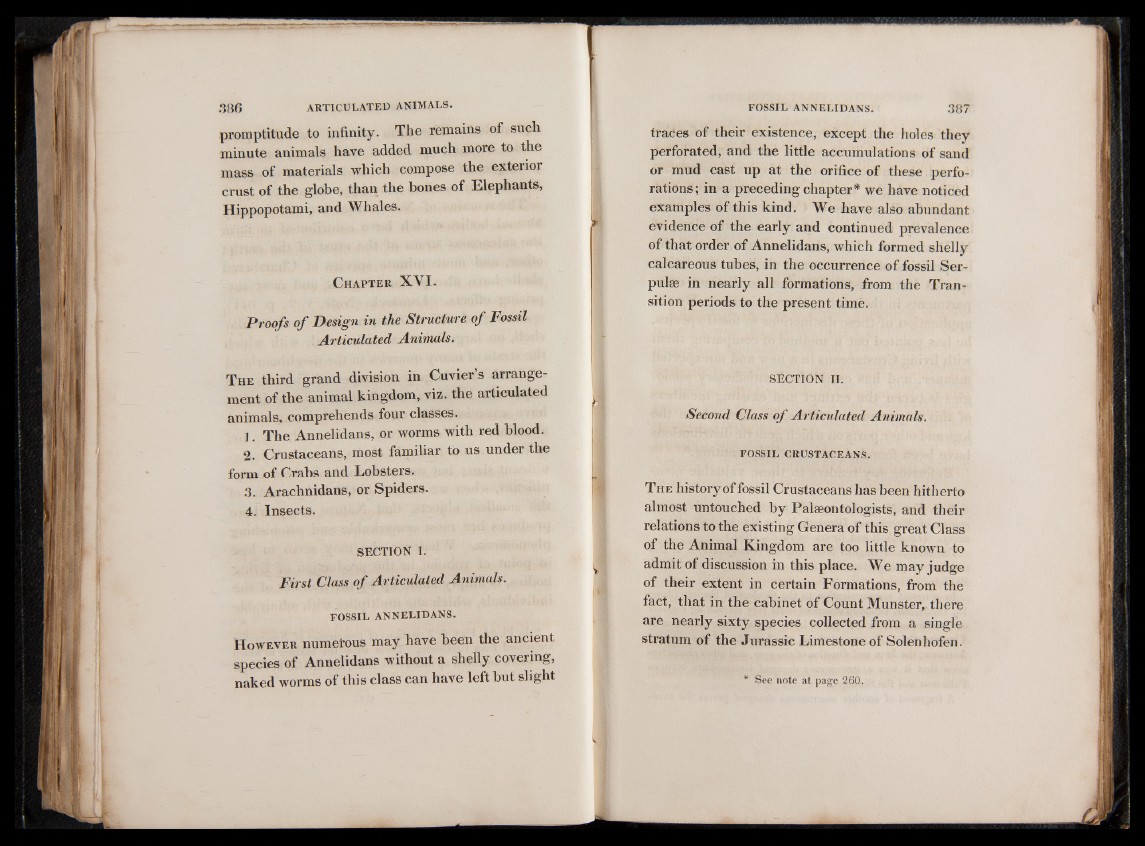
.3 8 0 ARTICULATED ANIMALS.
promptitude to infinity. The remains of such
minute animals have added much more to the
mass of materials which compose the exterior
crust of the globe, than the bones of Elephants,
Hippopotami, and Whales.
Chapter XYI.
Proofs o f Design in the Structure o f Fossil
Articulated Animals.
T he third grand division in Cuvier s arrangement
of the animal kingdom, viz. the articulated
animals, comprehends four classes.
]. The Annelidans, or worms with red blood.
2. Crustaceans, most familiar to us under the
form of Crabs and Lobsters.
3. Arachnidans, or Spiders.
4. Insects.
SECTION I.
First Class o f Articulated Animals.
FOSSIL A N N E L ID AN S .
H o w e v e r numerous may have been the ancient
species of Annelidans without a shelly covering,
naked worms of this class can have left but slight
FOSSIL AN N EL ID AN S . .387
traces of their existence, except the holes they
perforated, and the little accumulations of sand
or mud cast up at the orifice of these perforations;
in a preceding chapter* we have noticed
examples of this kind. We have also abundant
evidence of the early and continued prevalence
of that order of Annelidans, which formed shelly
calcareous tubes, in the occurrence of fossil Ser-
pulae in nearly all formations, from the Transition
periods to the present time.
SECTION II.
Second Class o f Articulated Animals.
FOSSIL CRUSTACEANS.
T h e history of fossil Crustaceans has been hitherto
almost untouched by Palaeontologists, and their
relations to the existing Genera of this great Class
of the Animal Kingdom are too little known to
admit of discussion in this place. We may judge
of their extent in certain Formations, from the
fact, that in the cabinet of Count Munster, there
are nearly sixty species collected from a single
stratum of the Jurassic Limestone of Solenhofen.
* See note at page 260.